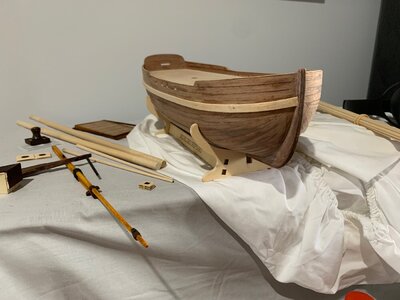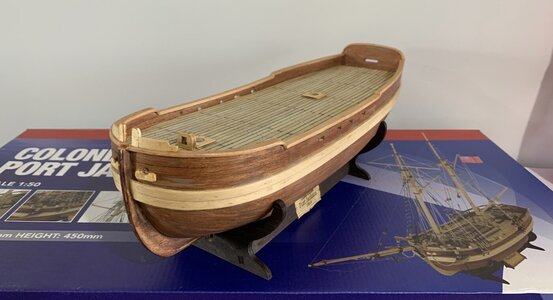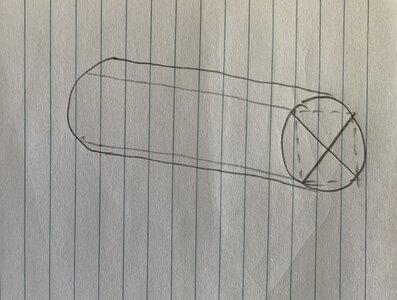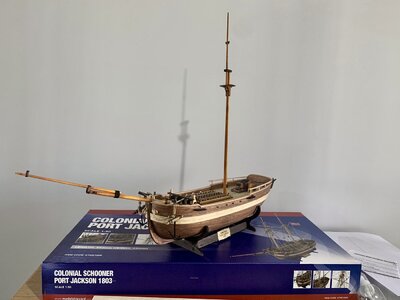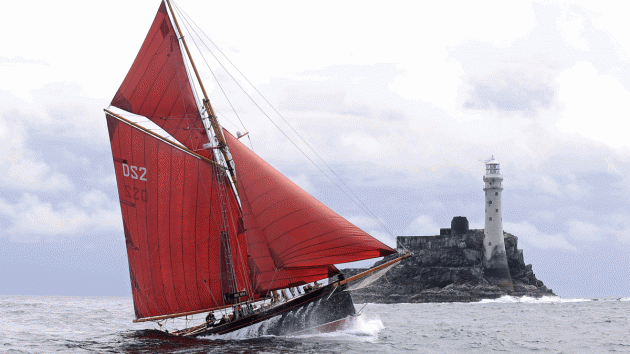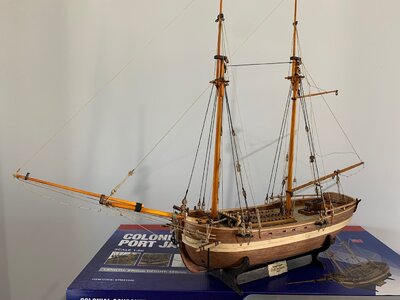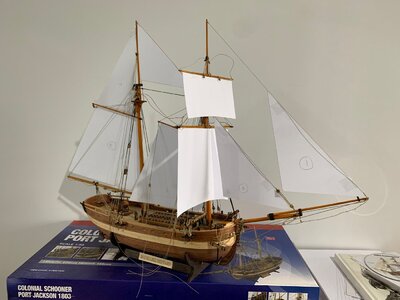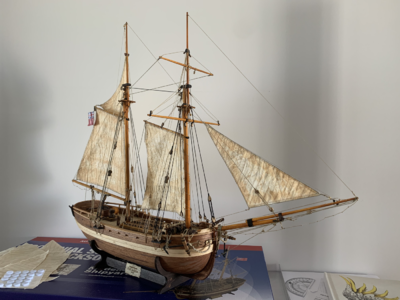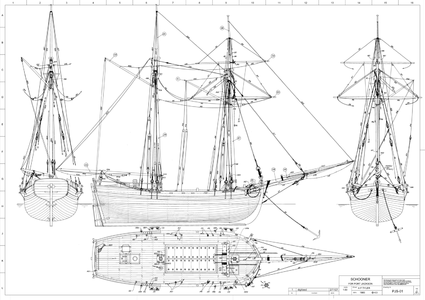- Joined
- Dec 30, 2021
- Messages
- 278
- Points
- 278

OVERVIEW:
This log covers the construction of the Colonial Schooner PORT JACKSON from the Modeller Shipyard kit. The ship is based upon Admiralty drawings of 1803 of a schooner design sent to the Australian Colony for ships to be built in Port Jackson (Sydney) to service Norfolk Island some 900 nm to the east.
This is a Level 2 kit so there are a few compromises (shortcuts) in parts and rigging. The kit does not come with sails or most of the rigging requirements associated with sails. There are also several standing rigging shortcuts too so its up to the builder to work through the instructions (sorry no plans in this kit) to ID and rectify.
The kit is a standard double plank on a skeleton frame hull with walnut veneer second planking. The kit is complete with some left over material in case of errors in construction. The rigging hardware is sound though I did not like the laser cut cleats as the ply delaminated on small parts. The Modellers Shipyard threads are nice to work with. I found that seizing the ropes is not allowed for so additional Black and Tan threads will be required if you intend to seize ropes/joins.
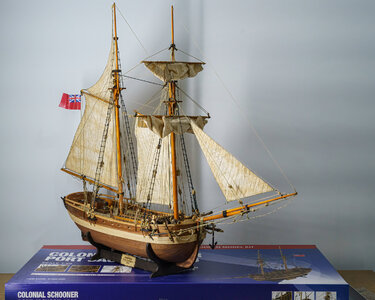
This log covers the construction of the Colonial Schooner PORT JACKSON from the Modeller Shipyard kit. The ship is based upon Admiralty drawings of 1803 of a schooner design sent to the Australian Colony for ships to be built in Port Jackson (Sydney) to service Norfolk Island some 900 nm to the east.
This is a Level 2 kit so there are a few compromises (shortcuts) in parts and rigging. The kit does not come with sails or most of the rigging requirements associated with sails. There are also several standing rigging shortcuts too so its up to the builder to work through the instructions (sorry no plans in this kit) to ID and rectify.
The kit is a standard double plank on a skeleton frame hull with walnut veneer second planking. The kit is complete with some left over material in case of errors in construction. The rigging hardware is sound though I did not like the laser cut cleats as the ply delaminated on small parts. The Modellers Shipyard threads are nice to work with. I found that seizing the ropes is not allowed for so additional Black and Tan threads will be required if you intend to seize ropes/joins.


